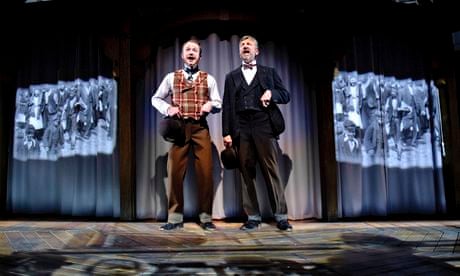Long before Andy Warhol predicted everyone's 15 minutes of fame, the Blackburn film-makers Sagar Mitchell and James Kenyon put ordinary people on celluloid. Standing with their camera at Victorian factory gates, or riding the tram at Edwardian seaside resorts and capturing those on the promenade, Mitchell and Kenyon made films that offer glimpses of ghosts, smiling and waving at the camera. They are extraordinarily vivid; almost unbearably poignant. You know that the laughing, toothy boys almost certainly ended up in the trenches of the first world war.
Daragh Carville's play with songs is a lovingly crafted account of these chroniclers of working-class northern life, whose lost films, shown in music halls and travelling fairs, almost ended up on a skip when they were discovered in an abandoned shop in Blackburn in 1995. The script, and Amy Leach's production, conjure a lost world of fairground barkers and jaunty music hall turns, even if it gets a little bogged down in the story of the recovery of the films.
There are lively performances from Gareth Cassidy and Christopher Wright as Mitchell and Kenyon, although the film-makers remain slightly shadowy figures whose aspirations and obsessions only emerge late in the proceedings. There's a great scene towards the end between Mitchell and his wife, Annie (Jo Mousley), who made her own sacrifices as her husband pursued his film-making ambitions.
Carville is good too on how the pioneering Mitchell saw opportunity in this new technology, but like many early adopters was over-taken by those who came after, including the emerging Hollywood film industry. It's an immensely enjoyable evening, made all the more distinctive by the interventions of film projection specialists and theatre-makers Imitating the Dog , whose flickering images on newspapers and lab coats remind that Mitchell and Kenyon's achievement was so much more than a trick of the light.
Until 10 May. Box office: 01524 598500 Venue: Dukes.

Comments (…)
Sign in or create your Guardian account to join the discussion